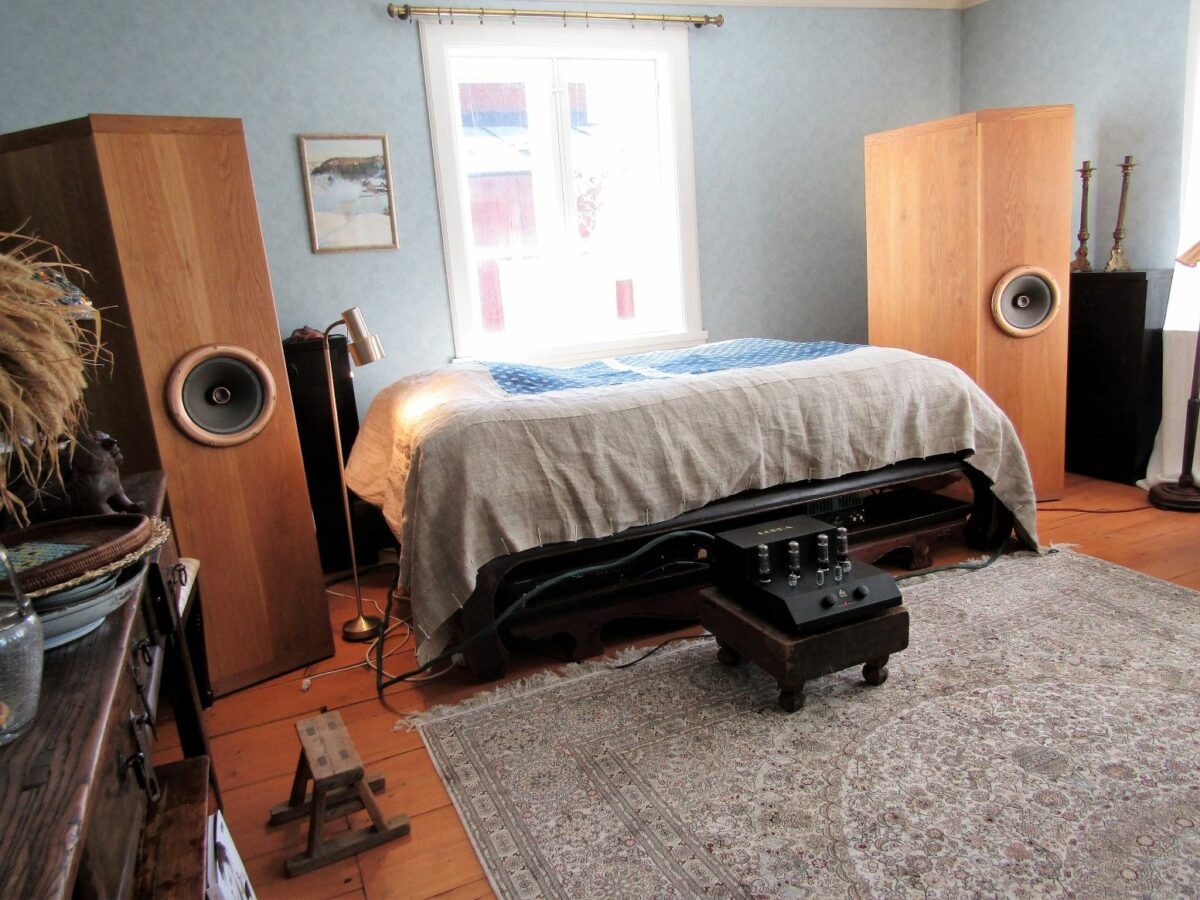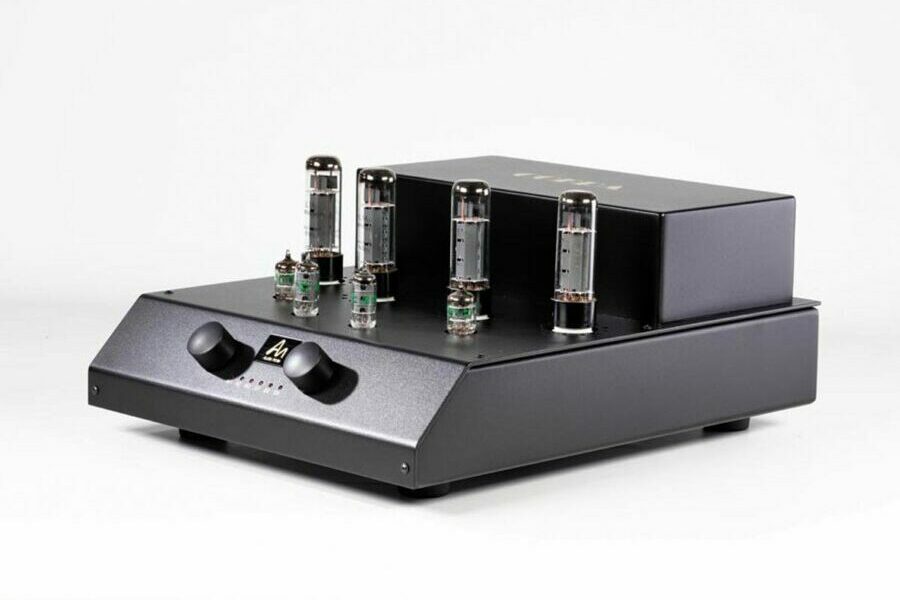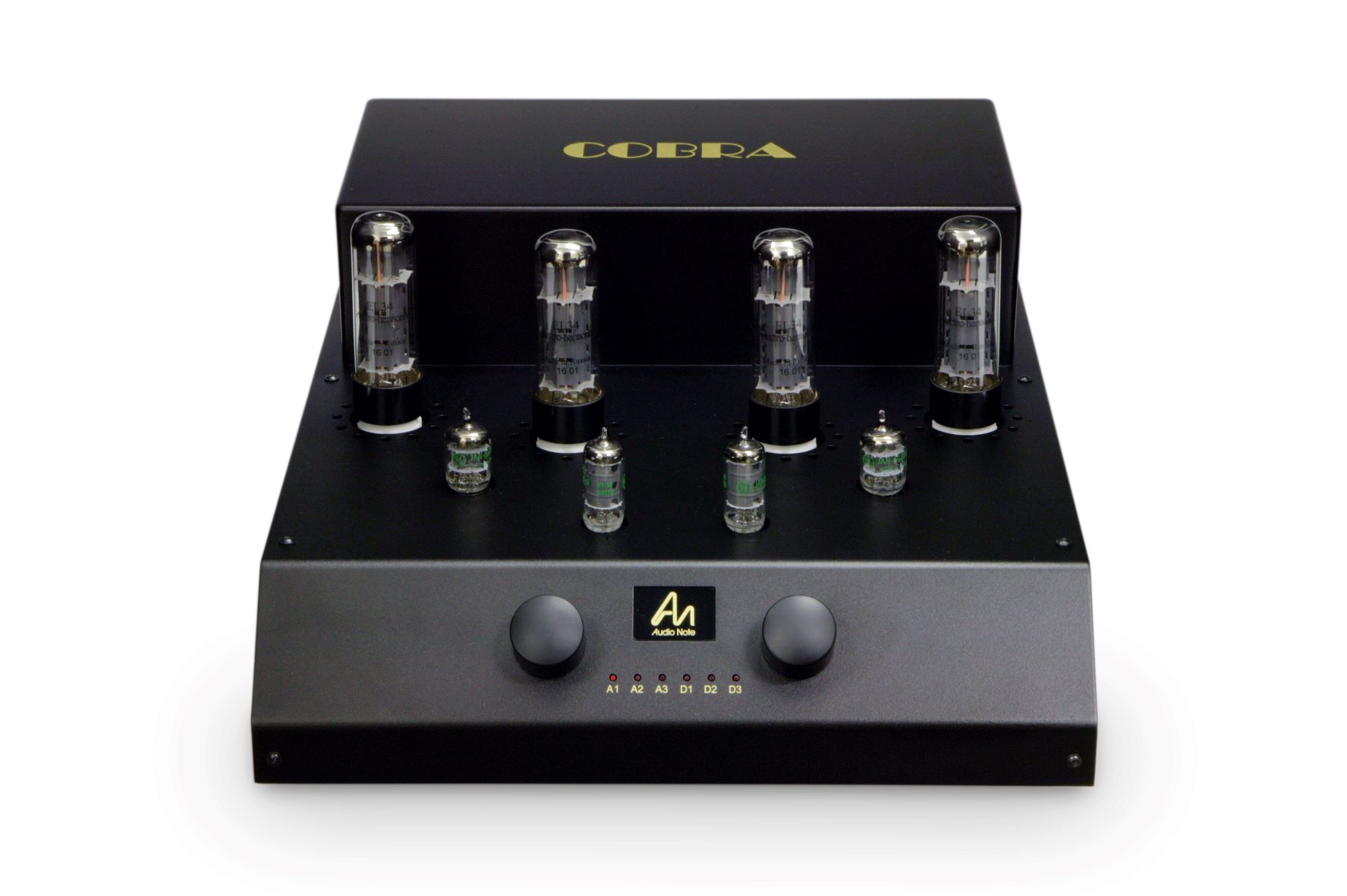 When I refreshed the teenage hobby in the 90s, one of my very first amps was VTL 10th Anniversary Triode 60 Stereo Integrated Amplifier; a special gold plated KT90 Class A push-pull device featuring larger octal tubes (6SL7 and 6SN7) for input and the driver, Mercury Magnetics VTO-100 output transformers, and passive volume controls, one per channel (the front panel pair of RCAs went directly into the input tube grids enabling the amp to be used as a stereo power amplifier).
When I refreshed the teenage hobby in the 90s, one of my very first amps was VTL 10th Anniversary Triode 60 Stereo Integrated Amplifier; a special gold plated KT90 Class A push-pull device featuring larger octal tubes (6SL7 and 6SN7) for input and the driver, Mercury Magnetics VTO-100 output transformers, and passive volume controls, one per channel (the front panel pair of RCAs went directly into the input tube grids enabling the amp to be used as a stereo power amplifier).
Now, it wasn’t exactly the greatest time in history (eg. Ei’s business collapsed in the former Yugoslavia and so on) to acquire good quality KT90s (or any other tubes for that matter), but apart from that, the VTL was a valid Class A 60 watter, and not too different from what was available at the emerging tube amp markets: pentodes / tetrodes in push-pull pairs at the output and most often operating in Class AB.
I thought it was a fine amp but apparently not. Fairly soon the interest diverted away from such (push-pull pentode/tetrode) amps toward smaller power single-ended devices, preferably with directly heated triodes (45, 2A3, 300B, 211, 845 etc.). This was no doubt partly because markets saw a growing inflow of higher sensitivity loudspeakers. But was that the chicken or the egg? The SET community, bringing together the best brains from France, Japan and the USA, had become more powerful and influential towards the end of the 80s, resulting eg. in introduction of the Sound Practices magazine in 1992, and the European Triode Festival a couple of years later.
It didn’t help that some of the pentode/tetrode PP amps, like my VTL 60 Anniv., were triode strapped, or had a switch for running the amp both in a pentode and triode mode. Push-pull pentode/tetrode amps didn’t go extinct, but they became questionable, in some circles at least, and the reputational damage seemed to hit especially the ones carrying Mullard’s fantastic invention from 1955: the power pentode EL34 (the parent company Philips introduced it already in 1949).
I also went with the stream, and the VTL had to go. Nothing against SETs. They’re great with a suitable wideband driver or for running a midrange/tweeter horn in a multi-way system, and so on. But the question that has haunted me ever since is this: was there something fundamentally flawed – or not – with the PP pentode/tetrode designs (for example, I cannot believe that the crossover distortion would explain everything)? So much so that whenever possible, I’ve seized an opportunity: VTL IT-85, Kondo Ouverture, Audiolici A1/25, Uraltone PP EL34 (Mauri Pännäri), Copland CTA 401 etc., not forgetting Johan Bernström’s exciting Sentec M-30 mono-blocks from the turn of the millennium.
And now this:
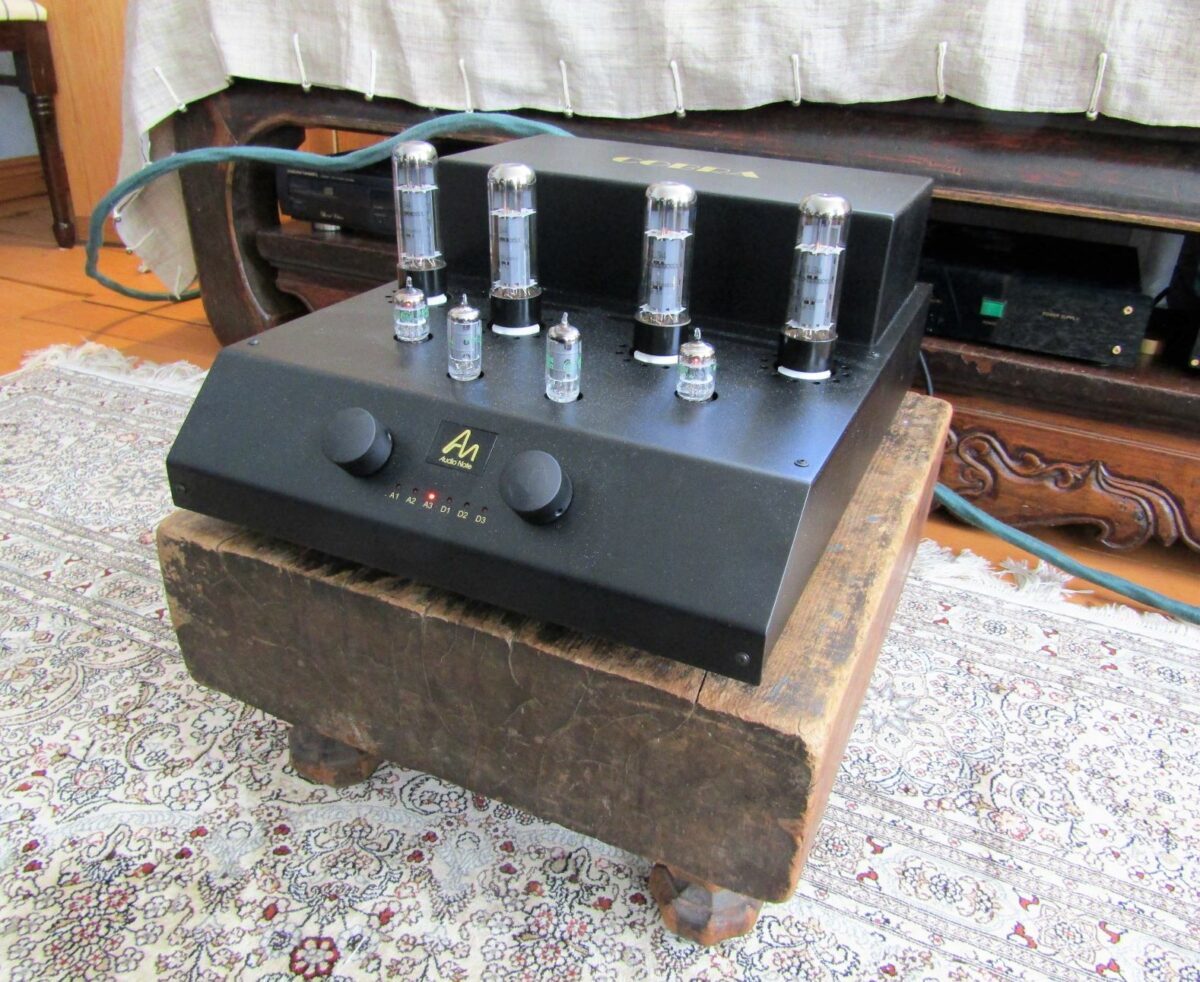
Audio Note UK Cobra
“28 watts per channel from a pair of EL34 valves in Pure Class A Push-Pull Pentode operation, capable of driving a wide variety of speakers thanks to its Audio Note designed and made high quality double C-core output transformers.”
The succinct description picks up what’s essential to Cobra’s performance: EL34 as the power tube, pentode coupling, Class A operation, and tailor made output transformers. In Audio Note’s seven-level rating, the Cobra ranks the second lowest (Level One). From here up, all amplifiers are either triode or at least single-ended designs. In this company the Cobra is more like an exception.
Why EL34? Why not RCA 6L6 or 807, or GEC KT88, or Tung-sol 6550? Or even Mullard’s own EL37 pentode from 1950 (made to compete with KT66)? I believe the answer is purely utilitarian: the EL34 is available in large quantities, and is technically solid, sturdy valve. The original Mullard “World Series” EL34 withstood 800V anode voltage, and Siemen’s industrial version up to 1000V!
The EL34s of the Cobra are from the Russian-American Electro-Harmonix, a matched pair or a matched quartet. EH’s EL34’s price/sound quality ratio is generally acknowledged to be good, but first and foremost they are reliable and not too expensive. Audio Note forecasts approximately 6 000 operating hours.
EL34 is indirectly heated (6.5 V) octal-based power pentode that is able (according to the data sheet) to produce 11W with 10% distortion on a single-ended principle (one per channel), and plus 35W with 5% distortion as a pentode pair. In the Cobra, a pair of EL34 is asked to deliver 2 x 28W.
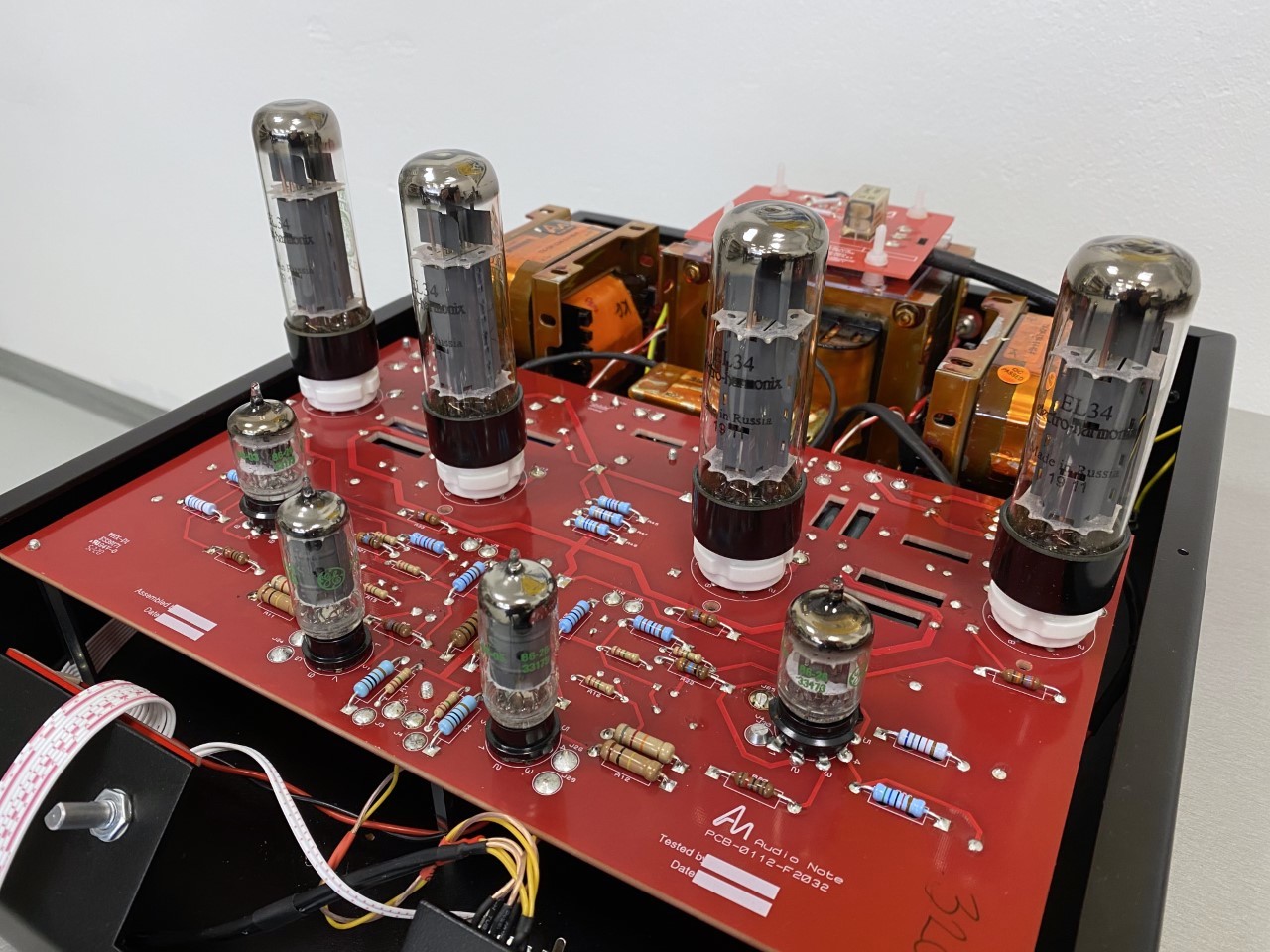
Pseudo-triodes
More would have been available since Audio Note UK has preferred not to triode-couple the EL34s (ie. the screen grid to the anode, and the suppressor grid to the cathode). It does recognize such pseudo-triodes and their better linearity in its own literature, but in the Cobra’s case decided to go for pentode-coupling most likely in order to double the power: two triode connected EL34’s operated in push-pull would deliver only 14W (at less than 1% THD, 430V).
The reason why the pentode-coupled Cobra only gives 28 W of power, is that Audio Note UK chose to bias the Cobra’s output stage into Class A. A push-pull amplifier in Class A? Yes, no problem. A push-pull amplifier works in Class A as long as the half-cycles of the input signal, separated at the phase inverter stage, stay switched on throughout the entire signal cycle, although the current flows in opposite directions. This is achieved by increasing the bias, i.e. the idle current, enough in order to prevent the amp from sliding into Class AB above a certain signal level.
First off, the Class A push-pull amplifier is, by default, more linear than a corresponding Class AB push-pull amplifier, and second, more immune to the ripple of the power supply. Compared to Class A single-ended amplifier, Class A PP amp does not require, in order to avoid core saturation, as massive output transformers, which suits the Cobra well.
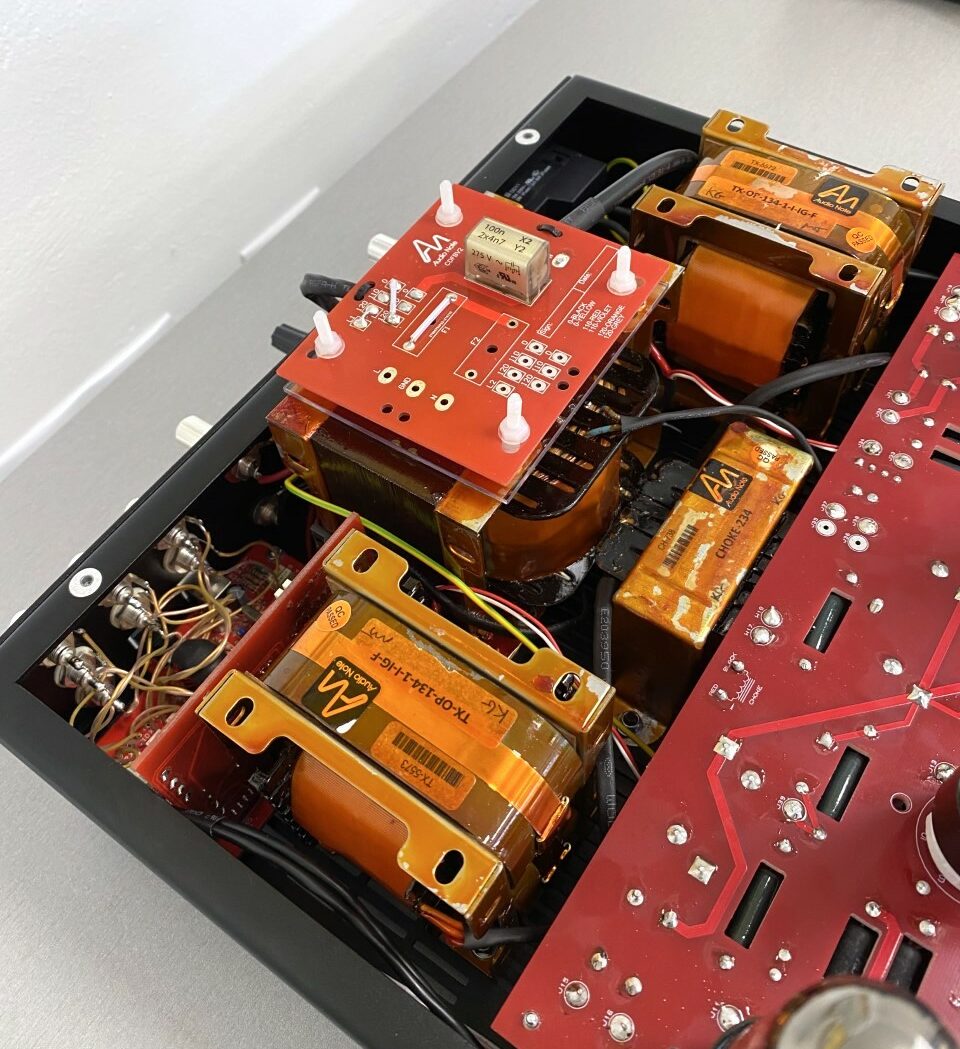
The corner stone
As is well known, something must go in between the output tubes and the speaker that converts the DC voltage of the amplifier to the AC voltage of the speakers, blocks the DC, and converts the tubes’ high load impedance to a low output impedance suitable for the speaker. For the job, Audio Note UK has chosen its own purpose-made Double C-core output transformers, and that, I think, is technically speaking Cobra’s best trump card against its competitors (the same goes for some of the other critical components). After all, a tube amplifier’s distortion, noise, bandwidth, and sound quality more generally depends on the OPTs used, their linearity, bandwidth etc. As David Manley (VTL) once put it: If one cannot afford a top quality output transformer, it’s better to do without.
Unfortunately, OPTs are complicated and labour-intensive to make, and thus expensive. Only a few companies, such as McIntosh or Audio Note UK, are able to manufacture their own transformers, and that gives them a non-negligible advantage.
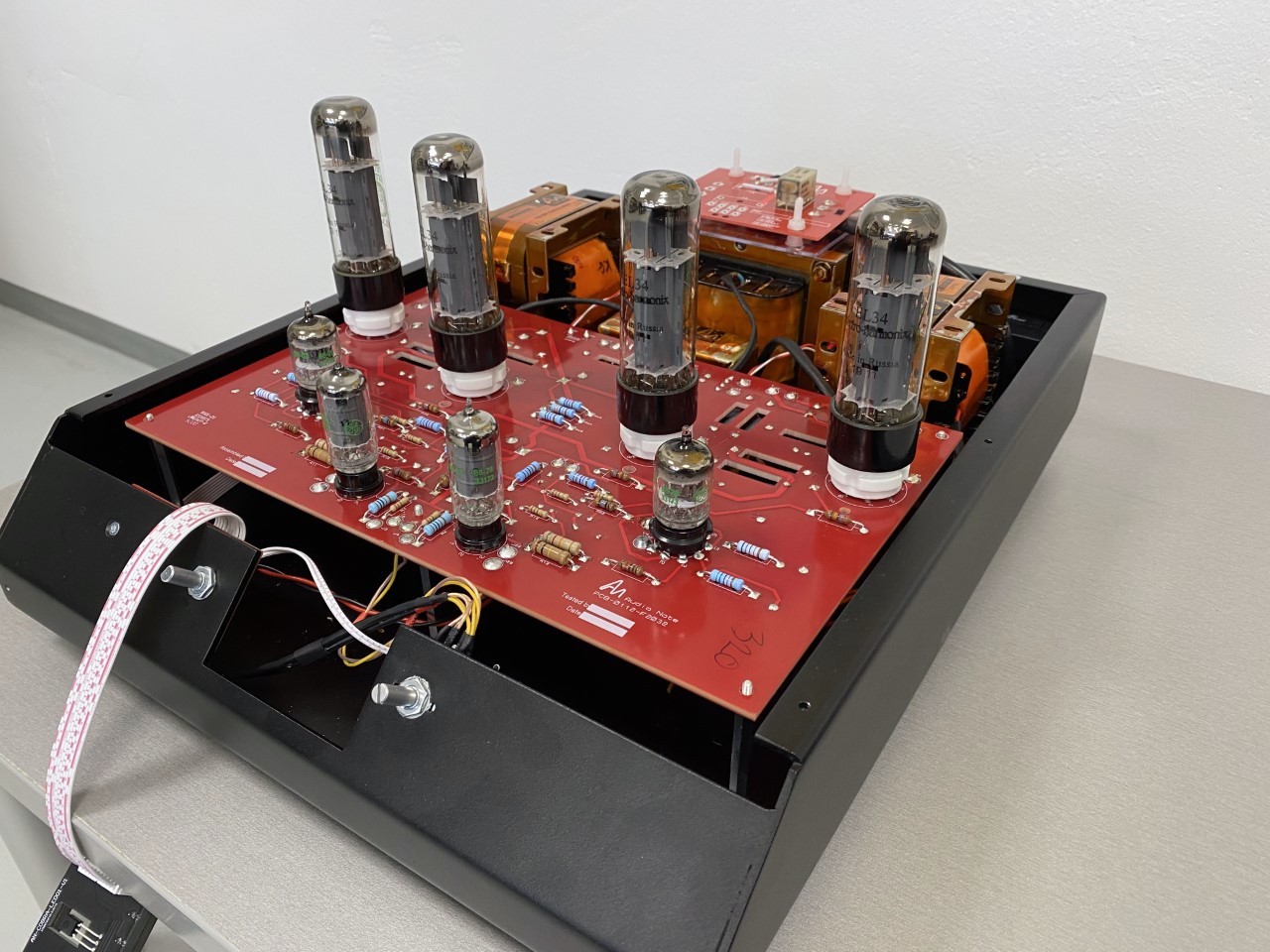
To be or not to be
The advantages of negative feedback – less distortion, less noise and lower output impedance – were first introduced in the late 1920s but using NF became widespread in audio amplifiers only after late 1940s, when D.T.N. Williamson presented an elegant way to take an appropriate amount of global negative feedback from the secondary of the output transformer, and feed it to the cathode of the input stage. No matter, negative feedback is still a hot potato among amplifier designers. All Audio Note UK amplifiers from the Cobra upwards do without feedback. However, being a pentode amplifier, the Cobra reportedly requires a corrective feedback circuit. How much feedback is actually used is not revealed to avoid “endless useless conversations”.
There’s another smart way to make use of the output transformer, called ultra-linear connection, originally developed by Blumlein in the 1930s, and later promoted eg. by Mullard in the 1950s. In the UL connection, a pentode/tetrode is made to act as if it were half a triode without a significant drop in power, by using intermediate outputs in the primary. This still popular transformer coupling is not in use in the Cobra.
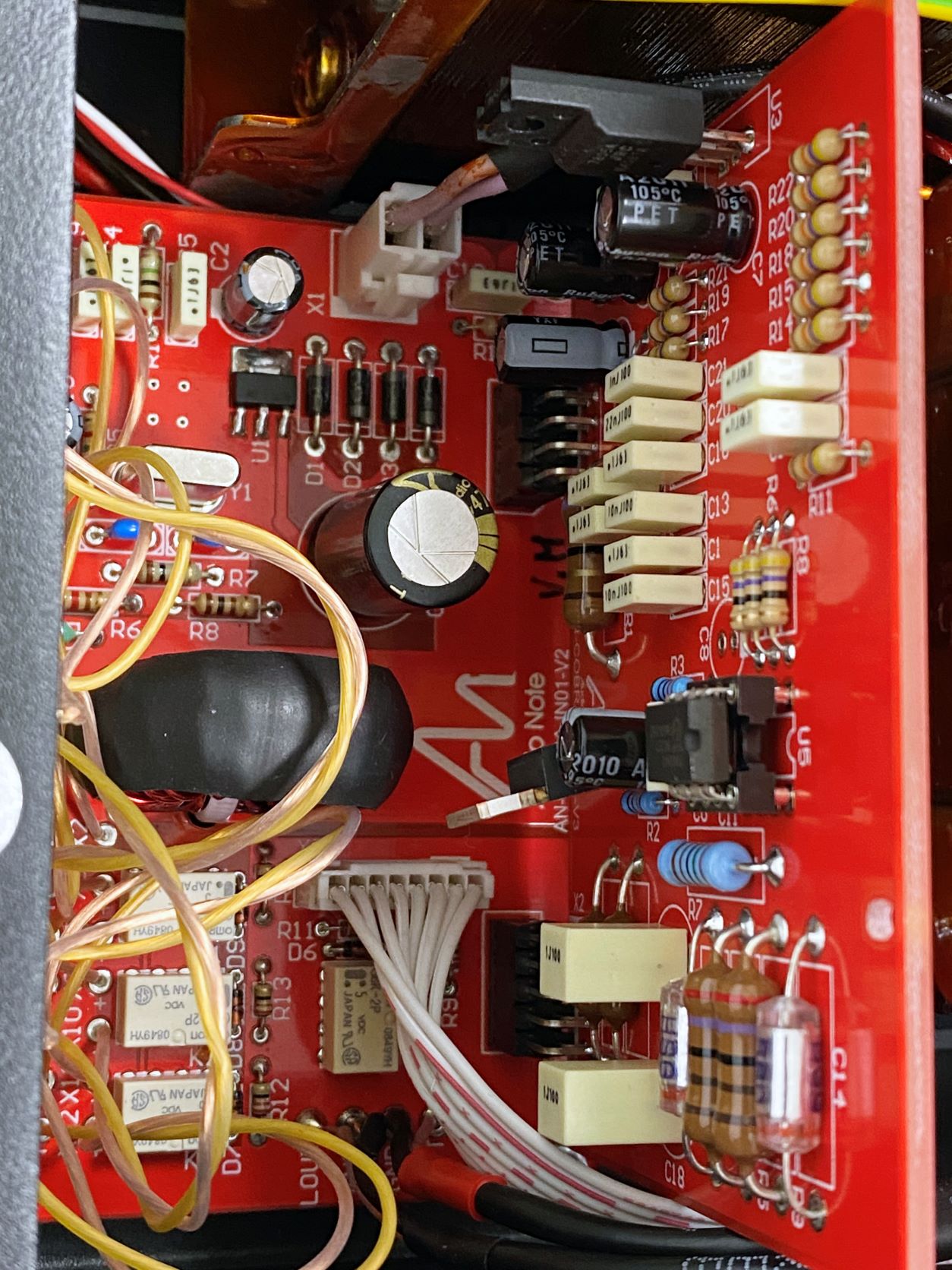
Preamp with dac
The two 6au6 pentodes, and the two 5670 triodes at the front (input/driver) come from General Electric, USA, and are JAN (Joint Army Navy) specified. Three rear pair of analogue RCAs feed the motorized analog volume control, joined by three digital inputs. An integrated DAC? Yes, indeed, and the DA-chip is Philips’ 16-bit TDA1543 from 1989! At least Sony, AKAI, Grundig, Kenwood, Marantz, and of course Philips used the low-cost and easy-to-handle TDA-1543 in their budget CD players in the 1990s. Maybe the first gen. Playstation too.
The Philips TDA-1543, just like its big brother TDA-1541, the king of multi-bits, may not technically keep up with the latest chips of ESS, Wolfson, or AKM. Yet, many still swear by the name of these 30-year-old classic chips, on the condition that the sound quality is not ruined by means of unnecessary signal manipulation.
The Cobra’s DAC hardly has any signal manipulation: no oversampling, no digital filter, no jitter elimination, no noise reduction, no re-clocking. In fact, it’s the same DAC that goes in the entry-level DAC 0.1x, with the difference that no 6111 tube or other gain device come after the TDA1543 chip. Instead, the maximum voltage of 2V (0dB) is obtained by correctly setting the I/V resistor values while “fully controlling the rising transient of the digital signal to make the sound sound good, smooth, and musical”. Further, the AN UK reminds us that, following the company’s design philosophy, the Cobra is specifically engineered for sonic performance rather than technical specification.

Prior to listening
The monolithic habitus along with the sloping front panel immediately reveals the matte black Cobra as a genuine Audio Note UK amplifier. Once the tubes are inserted into their sockets, the rest is obvious. The auto-bias automatically sets the ideal mA current level in the tube circuit, compensating for the differences between the tubes. The ear at the speakers, the Cobra was virtually noise-free or close to it. In one of the five locations that I tested Cobra, I noticed some hum coming from the engine itself, but totally ignored it at the listening position.
For running in Cobra (200h, according to the manufacturer), I chose, in the spirit of Audio Note UK’s “Comparison by contrast” listening procedure, randomly five sampler albums of Diapason music magazine, and let them sing in the beginning, and then at the 50h and 100h milestone. I cannot say that the Cobra would have made me more sensitive to the differences between the recordings per se, but I can say that it made me observe music itself in an unusual way. No doubt this was partly due to the fact that at this stage I was listening on moderate volume levels and mostly off-axis, but not only that.
For example, I can recall Debussy’s 24-minute orchestral work Nocturno, copied to a CD from seven of Columbia Records’ 78-rpm shellac discs from 1937. Often such samples are dismissed due to a seemingly modest recording (mono, 70Hz to 6000Hz bandwidth), but now the music kept me alert, and I wouldn’t rule out the effect of the amplifier. Some tube amps are known for being able to make the sound internally less homogenous, and thus kind of provide a more direct path to the sound of the music itself. However, it is hard to identify the cause precisely. ‘Pre-echo’ or ‘second harmonic octave accent” could serve as loose technical metaphors but not more.
Focus on the music’s midrange
Cobra’s overall tonal balance didn’t correspond to my recollection of similar EL34 PP amps from the 1990s with a slightly round but strong bass and ample midrange (VTL IT-85 is a good modern example of such an amplifier). With the Cobra, the focus was, in concrete terms, more on what happens in music over the midrange. At the risk of sounding banal, I’d say the Cobra is specifically tuned to sound more as if it were a member of the SET camp.
Second, the sound was clear-cut and the view over the music unveiled, but not in a bright kind of way. Finally, the Cobra kindly but determinedly made sure that the music was proceeding in the time and rhythm given to it. There was nothing weak about the Cobra’s sound in this respect.
I let the Cobra drive five (six in fact) different speakers with 86dB – 105dB sensitivity. The impedance ranged from 4 to 16 ohms, while the Cobra is set for 4-8 ohm speaker loads.
With a pair of mini monitors (70Hz-20kHz), the Cobra produced (FM radio) a healthier, more-flesh-around-the-bones tonal balance than the vintage transistor amp, but not more bass. As I switched to Dynaudio Heritage (42Hz-23kHz), to my big surprise nothing substantial changed. A little more mid-bass, perhaps, but the main focus remained stubbornly on the smoothly moving and palpable mid-range. Even the massive Electro-Voice Patrician 800 (20Hz – 20kHz), with its 30 inch horn-loaded woofer, didn’t make the Cobra lower its voice!
Was the run-in of the output transformers still in progress or something else? Personally I believe the question is simply of how the amp sounds. It includes a resilient, and well-defined bass but not as generous as with some other EL34 PP amps I’ve tried. The Patrician 800 is a four-way design and has a four-way’s resources. If the Cobra is to be married with a two-way, it’s better be wideband, and this will naturally bring thoughts back to Audio Note UK’s own speakers.
Otherwise the Cobra offered a slightly pale and ethereal but explicit, fast and rhythmically believable sound with a harmonious treble (Dynaudio Heritage): Orazio Benevoli’s (1605-72) Missa Si Deus pro nobis made stunningly beautiful listening!
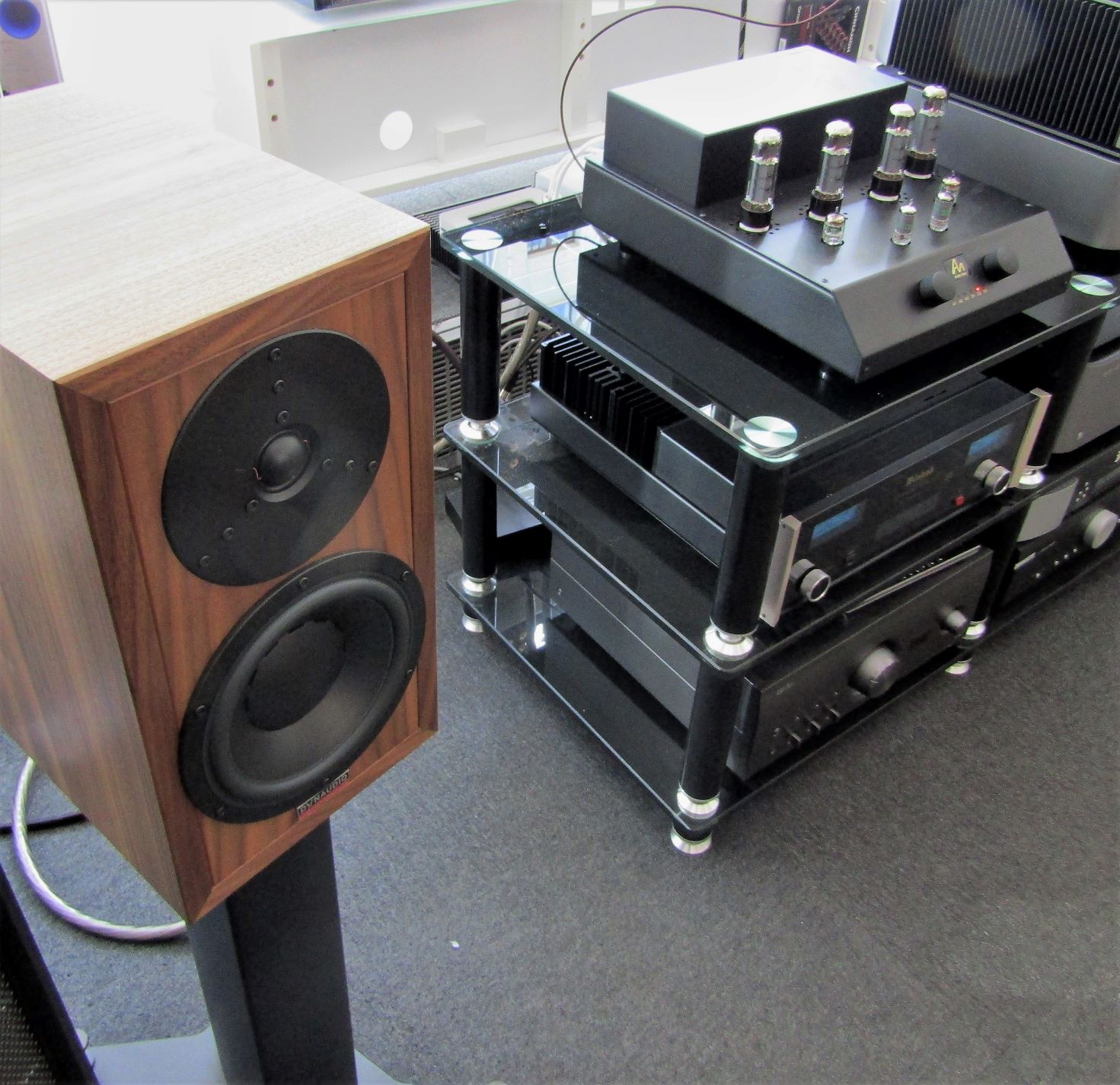
An impassioned rhythmic approach to jazz and other rhythm music with fast attacks (E-V Patrician): Randy Weston & his African Rhythms -trio (ZepTepi, 2006) gave one of the most believable presentations through this combo.
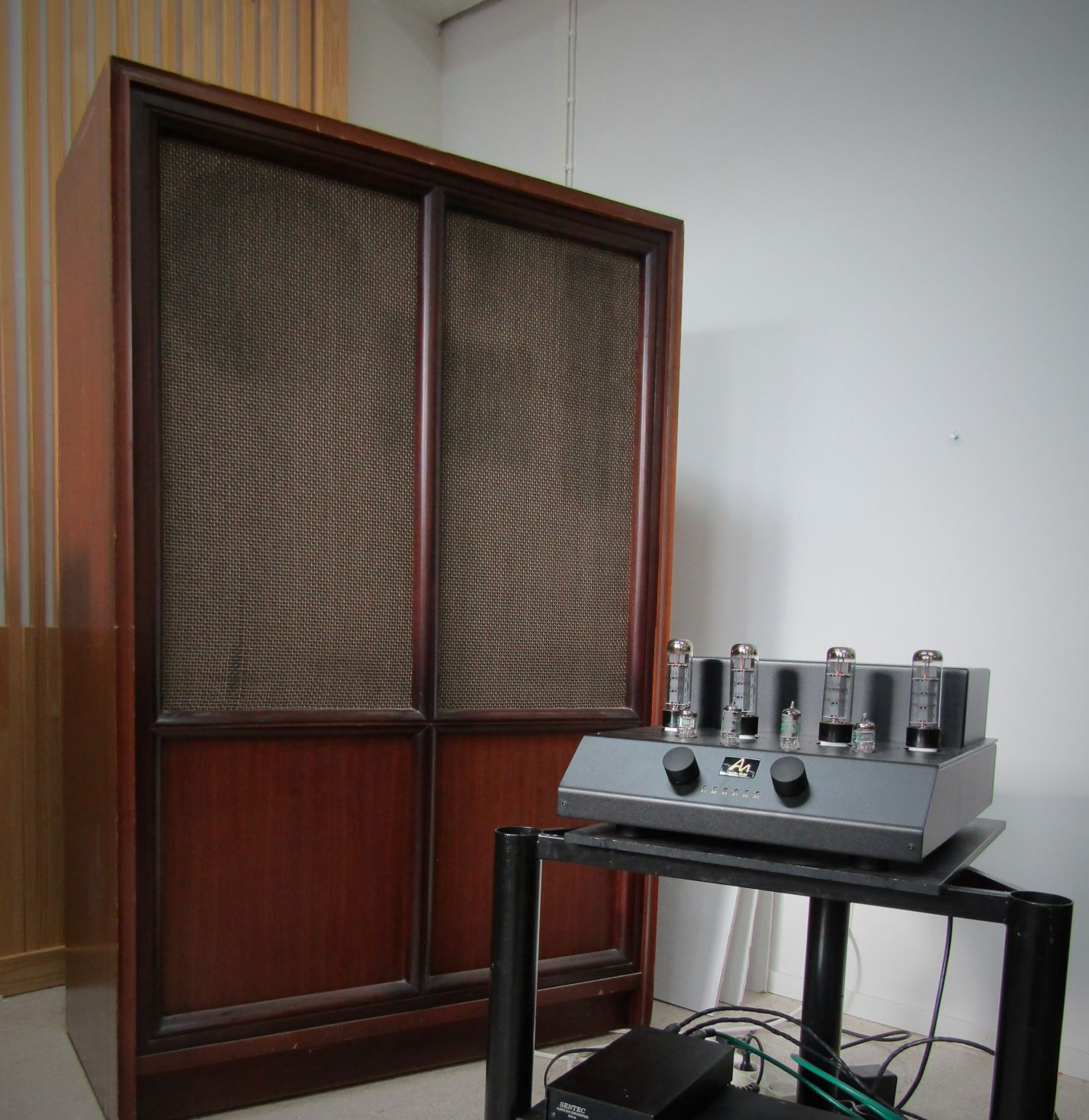
In some sense the happiest and best-balanced compromise between all aspects of the sound was delivered by my Lansing/Klipsch horn combo. The speaker lacks almost any energy below 50Hz, but that didn’t prevent the Cobra from producing a sound that was wholesome, inherently coherent, and strong enough in dynamics.
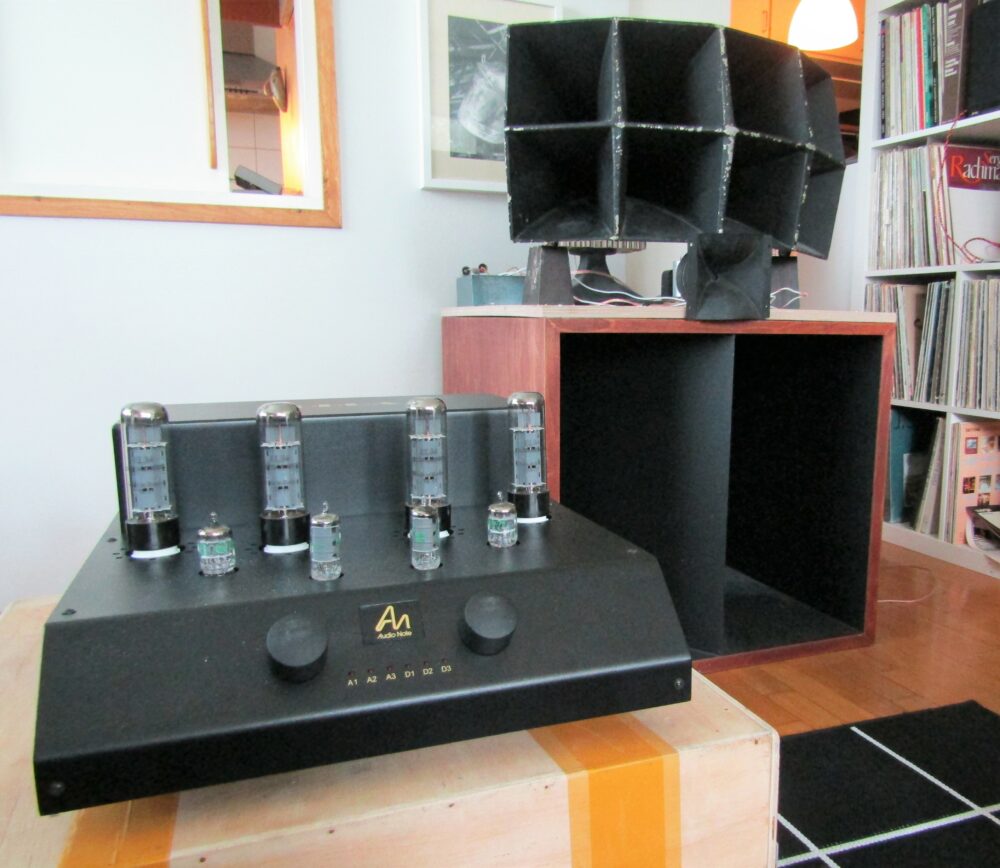
Finally, it was such a pleasure to hear the Cobra controlling a large open-back baffle, and its 12 inch widebandwidth driver: solo piano pieces (Scriabin) came out more upright and more luxuriantly compared to a 14W Class A EL84 push-pull amp but also, the Cobra held the stereo image better together while making the sound generally more spacious. With this system, the long echoes of vocal polyphony sounded as if coming from the realms of heaven!
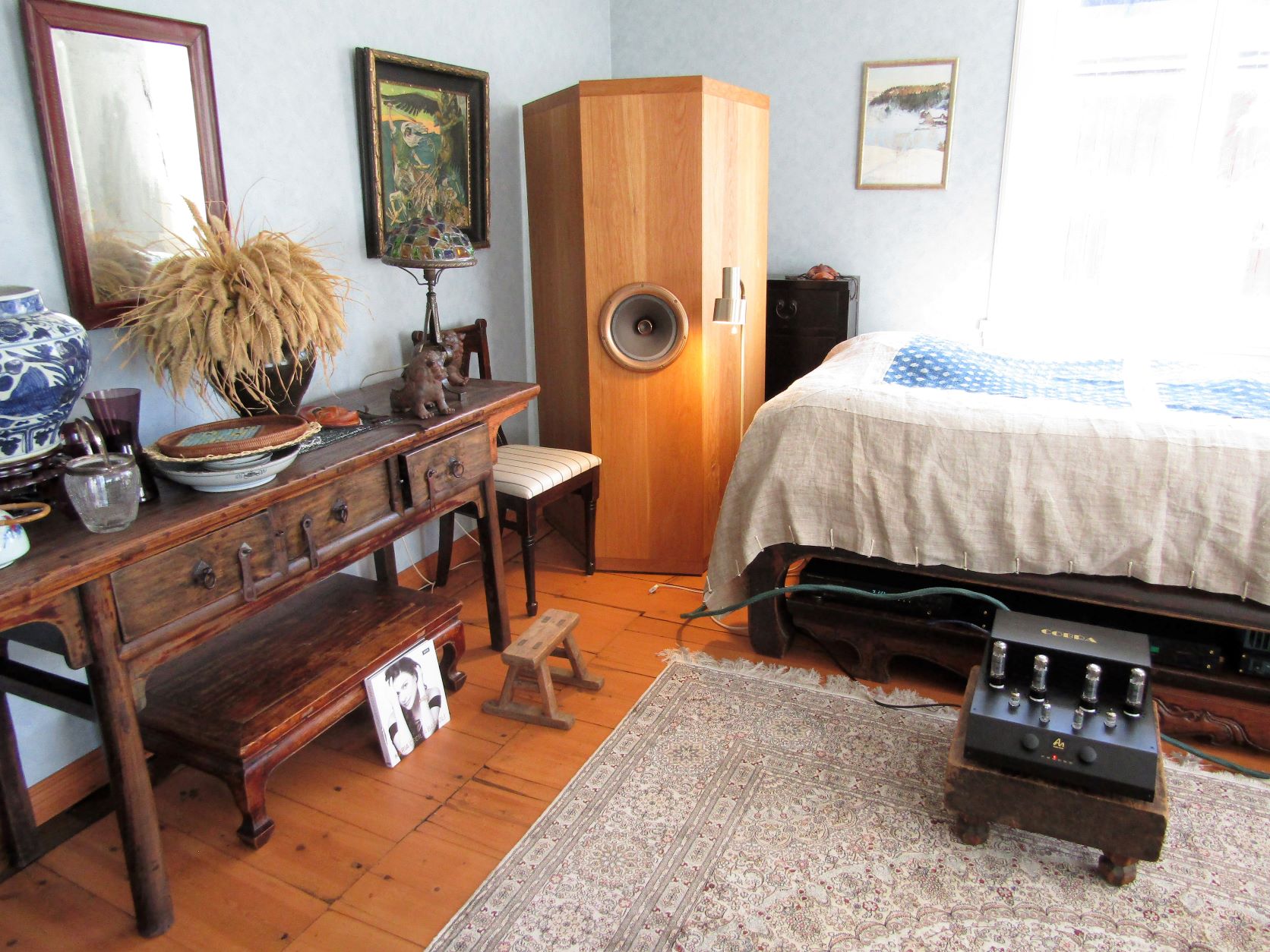
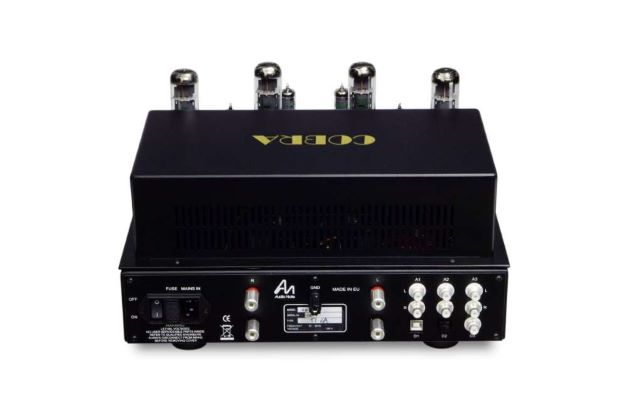 Through the DAC
Through the DAC
Audio Note UK’s previous top-model DACs (before they went for Analog Devices) trusted Burr-Brown’s classic multi-bit da-chip 20-bit PCM63, the very same DAC as in my Sentec Di-Ana. So, as far as the chip is concerned (which, naturally, is not everything), the contest was between Audio Note UK’s former reference chip versus Cobra’s cheaper edition of the TDA-1541 cult chip.
The result? Purely subjectively, a better defined, darker colored and more tense sound, in which individual instruments seemed to receive more attention and musical weight. The Di-Ana sounded less analytical, more picturesque, and also more holistic. Both approaches had their merits. A quick comparison with a modern PCM 32bit/768kHz ‘bit-perfect’ DAC proved that neither the Cobra nor Di-Ana had nothing to be ashamed of. In fact I felt (purely subjectively) that the modern DAC and the Cobra’s DAC were closer to each other (better definition) than they were to Di-Ana (more airy).
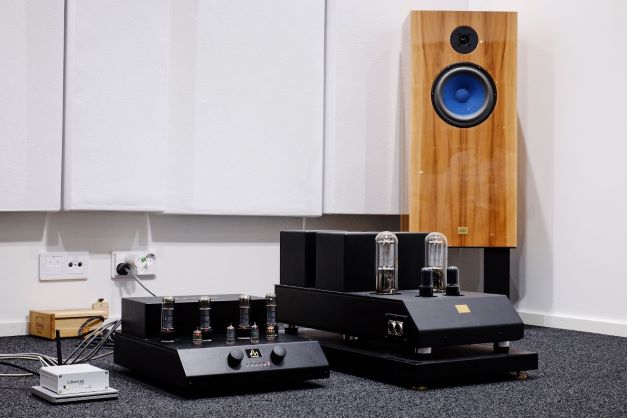
Summing up
Circuit-wise the Cobra more or less runs in the footsteps of Williamson and Mullard (as do most of the current PP amps), the emphasis being on practicality, reliability and affordability. But it does benefit from tailor-made output transformers, and the manufacturer’s exceptional opportunity to control what goes in the amp on a component level. I would be greatly surprised if that didn’t show up in how the Cobra has been voiced, behind of which is Peter Qvortrup’s meandering and non-technical but serious listening philosophy.
In sum, the Cobra is a reasonably priced, finely tuned, great sounding tube amplifier. It may require some work to find a loudspeaker that makes best of its sonic virtues, unless one wants to play it safe and buy speakers from the same manufacturer. I’m telling this because once I finished with the ‘official’ part of the review, I got a quick chance to hook up the Cobra to Audio Notes’ own AN-E SPx AlNiCo speakers. Compared to Audio Note UK’s impressive Jinro Shochu 211 power amp, together with other fine Audio Note UK electronics (M5 Phono Signature preamplifier, DAC 3.1x II Balanced, TT-3 + PSU4 + Arm 3/II + Io Gold cart.), the Cobra first sounded super-competent but eventually turned out to sound a tad more one-dimensional and not as nuanced as the reference amp/system. It also sounded less full-bodied, but overall the emphasis of the balance was less on the mid-range as with some other speakers I tried suggesting that the tone of the Cobra is indeed tuned to compliment the tonal balance of Audio Note UK’s speakers. But regardless of everything, the Cobra’s performance was a way superior than the difference in price would predict!
